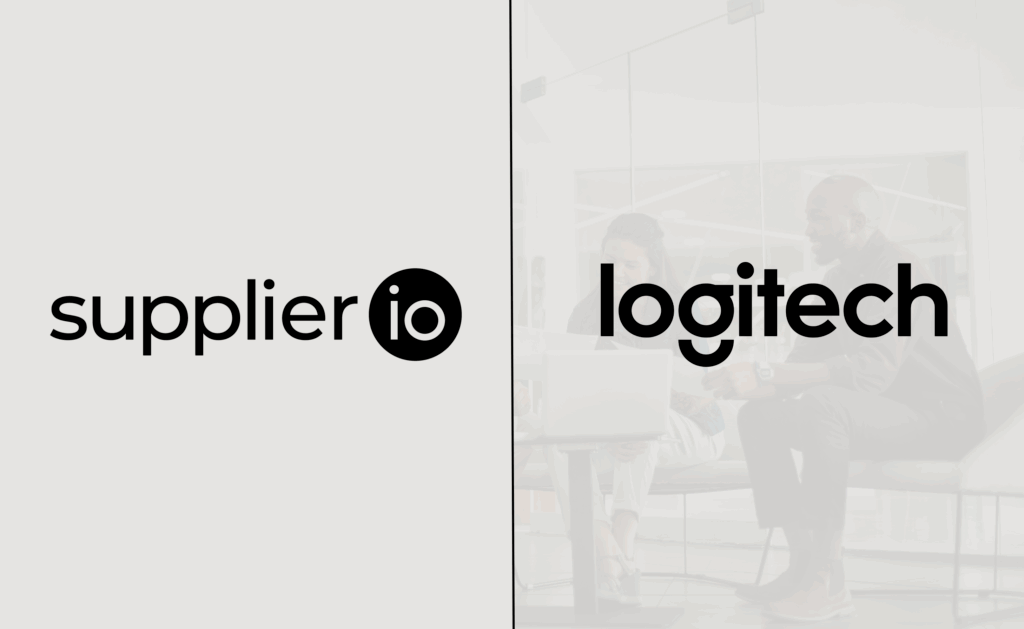Building a Successful Supplier Diversity Program: Lessons from Logitech
Logitech’s Head of Global Supplier Diversity shares how he’s building a successful and growing supplier diversity program.

In the quest for inclusive business practices, supplier diversity has emerged as a crucial strategy for organizations across industries. Recently, Logitech’s Itu Otu, Head of Global Supplier Diversity joined Supplier.io to share how he’s building a successful and growing program. The webinar shed light on the importance of supplier diversity and shared valuable insights into developing effective strategies. This blog post provides a summary of the key takeaways from Itu’s experiences, highlighting the significance of supplier diversity and offering actionable steps for organizations looking to enhance their supplier networks.
Supplier Diversity at Logitech:
While Logitech cares deeply about equity and inclusion, Itu also pointed out the many business benefits the company sees from their program. “Supplier diversity enhances innovation by bringing in unique perspectives and ideas from diverse suppliers.” Itu said.
He also pointed out how supplier diversity plays a significant role in building a positive brand reputation, demonstrating an organization’s commitment to social responsibility and equity. So it’s important to get leadership commitment and support. Otu shared.
“Executive buy-in is crucial to allocate resources and prioritize supplier diversity initiatives within an organization. Supplier diversity should be a part of the company’s overall mission and values, driving meaningful change from the top down.”
When Itu started with Logitech their diverse spend was measured at about 2% of total spend. Now they’re at over 10% diverse spend. With executive support, Itu took 4 major steps to grow the diverse spend at Logitech:
1. Set a Baseline:
By assessing current supplier diversity representation and spend, organizations can identify areas for improvement. Itu started by identifying the baseline and setting clear goals and metrics. Getting the right and accurate data was critical to Logitech’s growth. By seeing who the big spenders were and where they needed work, Itu was able to reach out directly to specific business units to offer help.
By setting a baseline, organizations gain visibility into their current supplier diversity landscape and identify gaps or areas of underrepresentation. This step serves as the foundation for developing targeted strategies and actionable plans to enhance supplier diversity.
Once he knew where the company stood, and who the big spenders were, he was able to set targets and goals. He explained, “By setting measurable objectives for supplier diversity, organizations can track progress and hold themselves accountable.” Otu emphasized the significance of regular reporting and transparency regarding supplier diversity performance, which further contributes to the success of these initiatives.
2. Build Relationships with Business Leaders:
During the webinar, Itu Otu highlighted the significance of garnering support from business leaders to drive supplier diversity initiatives. Otu stated, “Leadership commitment is vital to allocate resources and prioritize supplier diversity.” Engaging business leaders and incorporating supplier diversity into the company’s overall mission and values fosters a culture of inclusivity. By emphasizing the business case for supplier diversity, organizations can gain buy-in from executives and secure the necessary support and resources for successful implementation.
But Itu was quick to point out. “I don’t try to sell them supplier diveristy. If the company has already made the commitment, I’m there to help them implement supplier diversity and use it to grow their business.” Itu made it clear that he approaches these relationships as a partner working to help them grow their business, and not a compliance requirement they have to meet.
3. Implement Policies and Processes:
Itu Otu emphasized the importance of implementing robust policies and processes to ensure supplier diversity is integrated into procurement practices. Organizations should develop clear guidelines that promote the inclusion of diverse suppliers in bidding processes and provide opportunities for fair competition. Otu suggested, “Consider implementing supplier diversity requirements in Request for Proposals (RFPs) to encourage the participation of underrepresented businesses.” Additionally, organizations should establish an executive forum led by business unit leaders and focused on growing supplier diversity at the organization. This gives the business units ownership and empowers them to set their own goals. Making them a part of the process ensures that supplier diversity lives beyond just the Procurement team.
If some leaders push back or fail to meet their targets, Itu takes a strong stance. “Once we have executive support, I ask those that push back why they are NOT buying into the company mandated initiative.” This gives Itu the opportunity to work with them on real road blocks while also setting the tone for future collaboration.
4. Communicate with Executives:
Effective communication with executives is crucial for the success and sustainability of supplier diversity programs. Itu Otu stressed the importance of regularly communicating the progress, achievements, and challenges of supplier diversity initiatives to the executive team. By sharing success stories and highlighting the positive impact of supplier diversity on innovation, economic empowerment, and brand reputation, organizations can reinforce the value of these efforts. Otu advised, “Craft compelling narratives and present data-driven insights to demonstrate the return on investment and business opportunities associated with supplier diversity.”
Clear and consistent communication with executives keeps them informed about the organization’s supplier diversity goals, initiatives, and outcomes. Regular reporting on supplier diversity metrics, such as spend with diverse suppliers, supplier onboarding, and development programs, allows executives to gauge the effectiveness of the program and make informed decisions.
Conclusion:
The Logitech webinar featuring Itu Otu provided valuable insights into developing effective supplier diversity strategies. To enhance supplier networks, organizations should focus on setting a baseline, building relationships with business leaders, implementing policies and processes, and effectively communicating with executives. By establishing clear goals, securing leadership commitment, integrating supplier diversity into procurement practices, and regularly communicating progress and successes, organizations can foster an inclusive supplier network that drives innovation, economic growth, and a positive brand reputation. Supplier diversity is a crucial step towards creating a more equitable and sustainable future in today’s global marketplace.




